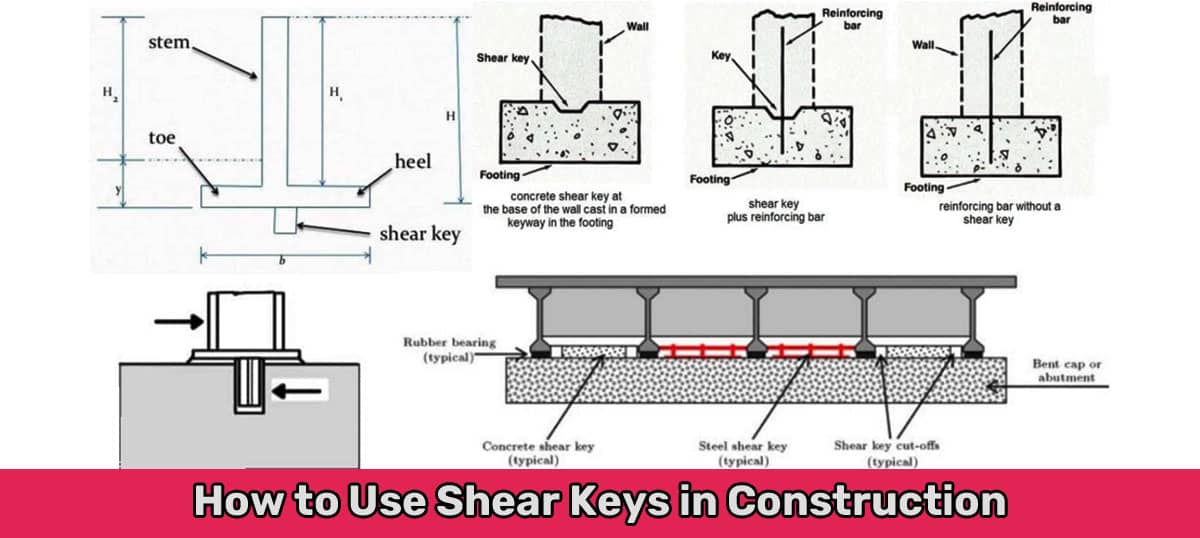How to Use Shear Keys in Construction

A building and shape has to undergo not only vertical masses, but additionally lateral hundreds. This can occur because of many design or natural motives. To counteract this lateral load, Shear Keys are used. Allow us to see today what exactly are shear keys and the way can you use them to your construction.
A building can face numerous lateral load due to many motives. A number of those encompass earthquake hundreds, sliding forces, water pressure, wind pressure and so on. This regularly takes place with bridges, maintaining walls, basements, extremely tall buildings, precast buildings and culverts, masonry walls wherein seismic pastime is stronger, and steel columns and piers.
Shear keys may be built by way of concrete in precast homes, and of metal in metal systems. Now and again, metallic reinforcements are made to play the part of shear keys as well. They enhance the lateral balance of a building.
Placement of Shear Keys
Where the shear keys may be located differs loads relying upon the structure they need to help. Allow us to discuss them under.
Bridges
In small to medium bridge structures, shear keys are positioned inside the abutments of the bridge. This provides lateral transverse aid to the structure above during sidewise movement.
At some point of an earthquake or comparable robust lateral pressure utility, the shear keys act as a sacrifice. Consequently, the sturdy seismic forces are prevented from getting into the abutment piles.
They act higher while they're positioned at the outer side of the bridge. However, this makes them difficult to investigate or restore.
Keeping partitions
You need to vicinity shear keys at the bottom of keeping partitions, just beneath the stem. This prevents sliding of the bottom at some point of strong lateral force utility.
The shear keys located underneath the wall should be almost two times in width than their intensity for the quality overall performance. Normally, they are 508mm by way of 381 mm, respectively.
Basement Wall and Footing
On the joint of the footing and the basement wall a shear key must be supplied to save you it from transferring laterally.
It ought to be solid as a part of the wall, extending proper into groove in the footing. From time to time, extra reinforcement bars are furnished for added power.
Metallic Column and Footing
Similarly as above, shear keys are inserted into the joint among the bottom of steel columns and footings. In this example, a special kind of secret's used, like an I-section or T-segment.
It's miles welded onto the lowest of the bottom plate. Which makes them very strong in resisting shearing forces.
Precast Concrete
It is tough to provide proper shearing resistance in precast constructing components due to their very nature. However, an advert-hoc answer can be to provide shear keys inside the joints of various precast concrete blocks. This increases their resistance to lateral transferring.
Masonry wall
In areas in which there are quite a few seismic activity frequently (Japan, for instance), using precast keys in masonry buildings is a must. Here, shear keys are used in between masonry blocks. Occasionally, the blocks themselves come geared up with shear keys from manufacturing.
